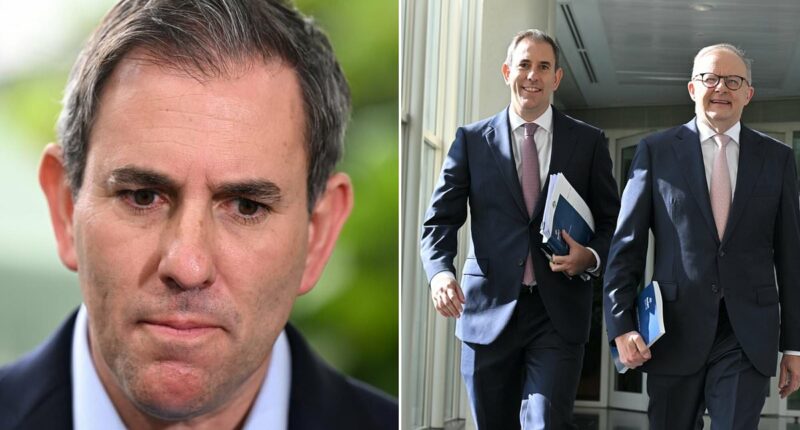Share this @internewscast.com
It seems we’re facing familiar financial woes once more: inflation is on the rise, and it couldn’t have come at a worse time.
Australia’s Consumer Price Index (CPI) figures for the September quarter were released today, showing a 1% increase over the period.
To put this in perspective, the Reserve Bank of Australia (RBA) had anticipated a rise of only 0.6%, which might have paved the way for an eagerly awaited interest rate cut. That prospect now seems out of reach.
Homeowners hoping for some financial reprieve will be left waiting, as will businesses grappling with high costs amidst a challenging economic climate.
So, who bears responsibility? Many point to Treasurer Jim Chalmers. By avoiding the difficult job of reining in excessive spending, he is seen as exacerbating inflationary pressures. The situation is straightforward.
The current scenario, with inflation climbing alongside rising unemployment, spells trouble, especially given the lackluster economic growth figures. This predicament hampers the RBA’s ability to reduce rates to support a faltering economy, as doing so could further ignite inflation. Such conditions are ripe for a recession.
Headline prices rose 1.3 per cent over the quarter and 3.2 per cent over the year. More importantly, the trimmed mean ticked back up to 3 per cent year-on-year, thanks to the latest quarterly results. It’s the first re-acceleration in core inflation since late 2022.
Drill into the monthly detail and another culprit leaps off the page: energy price rises. Electricity prices are up a staggering 34 per cent over the past year, with gas prices also higher. It’s hard to decouple rising energy costs from emissions targets.

Inflation up. Unemployment up. Growth down. The Treasurer’s luck is running out, writes PVO

Inflation won’t budge, unemployment is rising – and rate cuts are off the table
Some of this was foreshadowed by the RBA. It warned that the unwinding of government electricity rebates would lift measured inflation in the second half of this year, which is exactly what’s happened.
Set that against what’s happening across the broader economy, and the mix is ugly. Unemployment has risen to 4.5 per cent, the highest since 2021. Consumer sentiment slid again this month, deep into pessimistic territory. Households are feeling the squeeze.
Which brings us to Chalmers’ budget strategy. The latest economic figures show much of Australia’s recent growth is coming from government spending. But the budget outlook shows bigger deficits ahead.
That means while the Reserve Bank is trying to slow the economy to curb inflation, the government is still pumping money into it – working against what the RBA is trying to do.
It’s the equivalent of driving a car with the brake and accelerator pressed at the same time.
Clearly, the inflation fight isn’t over. Core inflation is sticky, energy prices keep surging, and upward pressure remains. Real wage gains that looked within reach mid-year now risk being eroded again by higher-than-ideal inflation.
The RBA has cut rates three times this year, following a dozen hikes in its bid to get inflation under control. This new data will only make the board more cautious – and less likely to cut again anytime soon, unless economic weakness forces its hand despite the inflation numbers.
Politically, Labor owns the cost-of-living story – whether it likes it or not. They’ve been in power for three and a half years.
It’s getting harder for the government to claim it’s managing money carefully when its own spending is adding to inflation. The Opposition should be jumping on that – even if it hasn’t offered much of a plan itself. Instead Liberal leader Sussan Ley is more interested in the shirt Albanese is wearing.
In irony of all ironies, perhaps the only factor avoiding a recession is high rates of immigration. Growing the pie sufficiently to avoid a technical recession, even if everyone’s slice of the pie keeps shrinking.
What should happen from here is dull but necessary. Fiscal policy needs to do less (fewer unfunded promises, tighter spending discipline), monetary policy needs to sit tight, and Labor needs to get serious about addressing supply-side constraints.
None of that is headline-grabbing, but it’s how you grind inflation back down – without grinding the economy to a halt.





